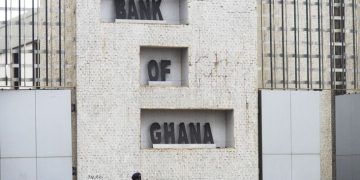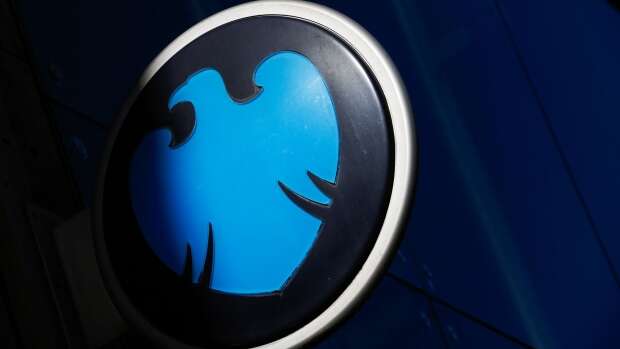Barclays Plc said it will go on a major cost-cutting drive, reorganize its reporting structure and return at least £10 billion to shareholders in the coming years, ending months of speculation about the future direction of one of Europe’s largest investment banks.
The British bank achieved a return on tangible equity of 9% for 2023 and is aiming to get that metric above 12% in 2026, according to a statement on Tuesday. To achieve its new targets, Barclays said it will reduce costs by £2 billion ($2.52 billion) over that time while it boosts revenue to £30 billion.
The company is also overhauling its operations and reorganizing into five new divisions: its UK retail bank, a UK corporate bank, a private bank and wealth management arm, an investment banking division and a US consumer bank.
“We are reorganizing the businesses in the way in which they face our clients and how we service our clients and it’s as simple as that,” Chief Executive Officer C.S. Venkatakrishnan said on the conference call with journalists. “We will manage our costs, which are generally a combination of technology, people, property and headcount.”
Shares in the bank were up 7.4% at 1:14 p.m. in London, the biggest jump since January 2021.
Barclays has rejiggered some of its top management ranks as a result of the changes. Adeel Khan has been appointed sole head of the global markets division, while his former co-head Stephen Dainton becomes president of Barclays Bank Plc and head of investment bank management. Cathal Deasy and Taylor Wright will continue in their current roles as co-heads of banking.
Vim Maru is the new CEO of Barclays UK and the previous holder of that role, Matt Hammerstein, is now CEO of the UK corporate bank. Hammerstein is also taking on responsibility for public policy and corporate responsibility from Sasha Wiggins, who is now CEO of the private bank and wealth management division.
The firm had previously warned that it would incur charges in the fourth quarter tied to its efforts to cut costs. Those charges added up to £927 million in the period, including £188 million of costs tied to rightsizing headcount in the corporate and investment bank.
Those moves should help the bank deliver about £500 million in savings this year, executives said.
Risk-Weighted Assets
For the fourth quarter, the firm’s corporate and investment bank posted total revenue that slipped 7%. The unit has long been a source of debate for investors because of the amount of capital it consumes relative to other, higher-returning parts of Barclays’s business.
Executives on Tuesday were adamant that they believe the business is appropriately sized, though they acknowledged they will seek to grow other parts of the business in order to improve that balance. To that end, in recent weeks announced it would acquire much of Tesco Plc’s banking business as the lender seeks to establish a greater foothold in retail banking in the UK.
In all, Barclays sees risk-weighted assets climbing by £50 billion in the coming years. The company is planning to allocate £30 billion of that to its UK-focused businesses: Barclays UK, the UK corporate bank and the private bank and wealth management division. The remaining £20 billion will be allocated to the US consumer bank, which is largely due to changes in regulation, executives said.
What Bloomberg Intelligence Says:
Barclays’ raised financial goals set a high bar — lifting the profitability aim to 12% vs. the prior 10% and targeting £30 billion in revenue, 13% above consensus — but delivery on those remains far from assured. Shrinking the investment bank to about half of the group, lifting shareholder payout to £10 billion and £2 billion of cost saving are all welcomed by investors and more readily achievable – Philip Richards, senior banks analyst
The investment bank, though, will be forced to absorb the impact of higher capital requirements without getting any additional capital from the bank, Venkatakrishnan said. Taken together, it will mean the investment bank is consuming about 50% of the bank’s risk-weighted assets by 2026, compared with the 63% it currently has, he added.
“Over the medium term, this will rebalance RWAs between consumer and wholesale and support more consistent and higher returns,” he said.
As part of its efforts to increase the scale of its UK-focused businesses, Barclays is planning to expand its unsecured lending business in the country. As part of that, the firm will soon offer such loans to consumers who aren’t customers of the bank already.
“We are really emphasizing our confidence in the UK both as a place to do business and a place from which to do business,” Venkatakrishnan said on a conference call with journalists. “And as I travel the world, the importance of having a counterparty based in London is becoming increasingly important in value. That is a very large part of the strategy as well.”
Trading Changes
Under Khan, the markets division will focus on growing in a bevy of areas in the coming years as it seeks to boost its returns above 12% by 2026.
The bank is planning to focus on boosting its market share in European rates, equity derivatives and securitized products trading. That should help it add £500 million in income in the coming years, Khan told analysts on Tuesday.
The firm will also continue to invest in its financing and prime businesses, which should help it add £600 million to the bank’s revenue coffers. Already, more than 50% of the hedge funds that have launched since 2021 with more than $1 billion in assets under management have selected Barclays to be its prime broker, Khan said.
Within investment banking, the firm is planning to expand in areas like advisory and equity underwriting. That should add another £600 million in revenue and help with efforts to improve the unit’s returns because those businesses consume less capital than areas like debt capital markets, Venkatakrishnan said.
“Our investment bank has to be higher returning and relatively speaking it has to become a smaller part of Barclays,” Venkatakrishnan said. “The simple way to think about it is that we’re looking for the investment bank to grow and to contribute more while consuming less.”
Source: norvanreports.com





































